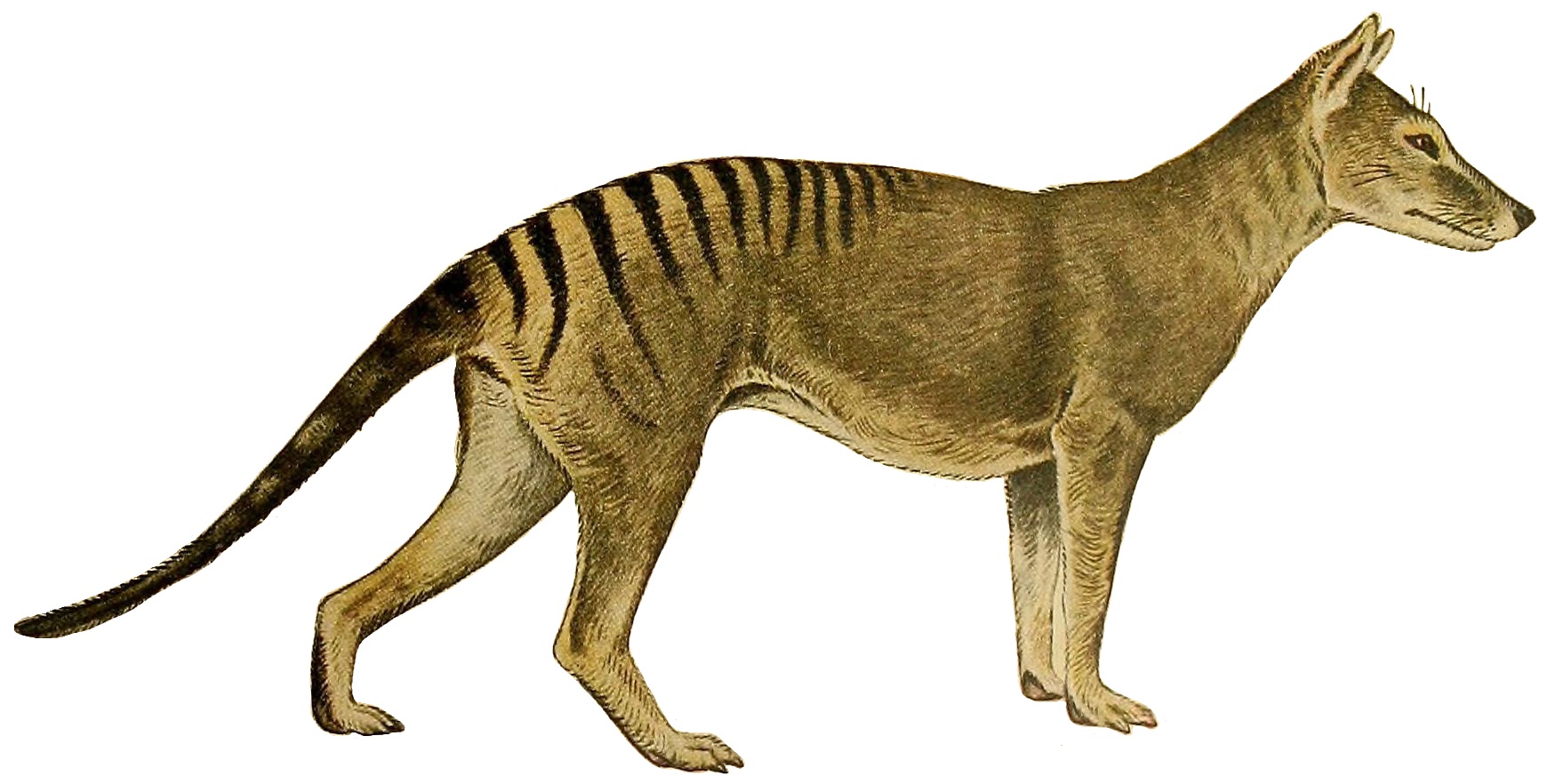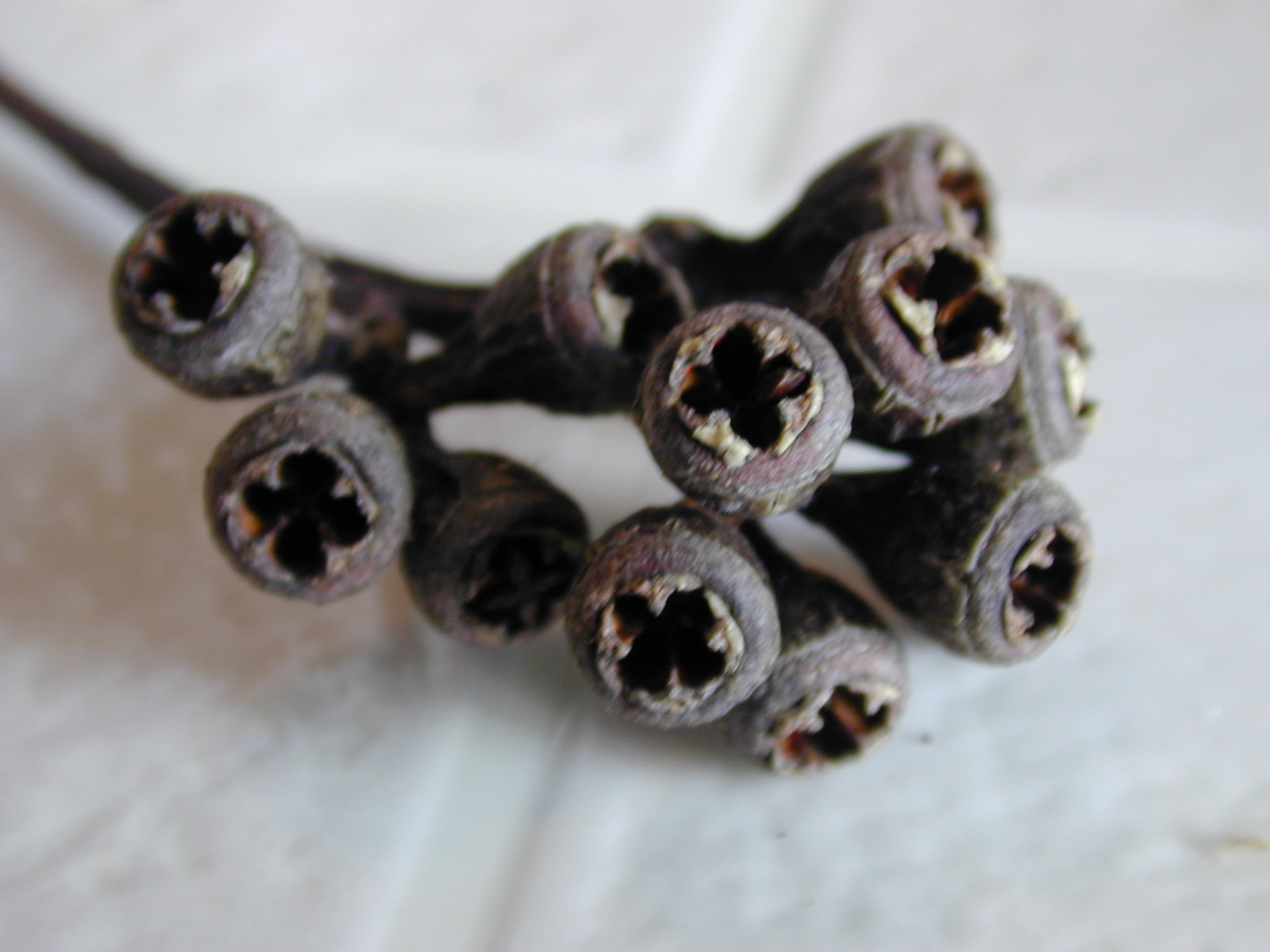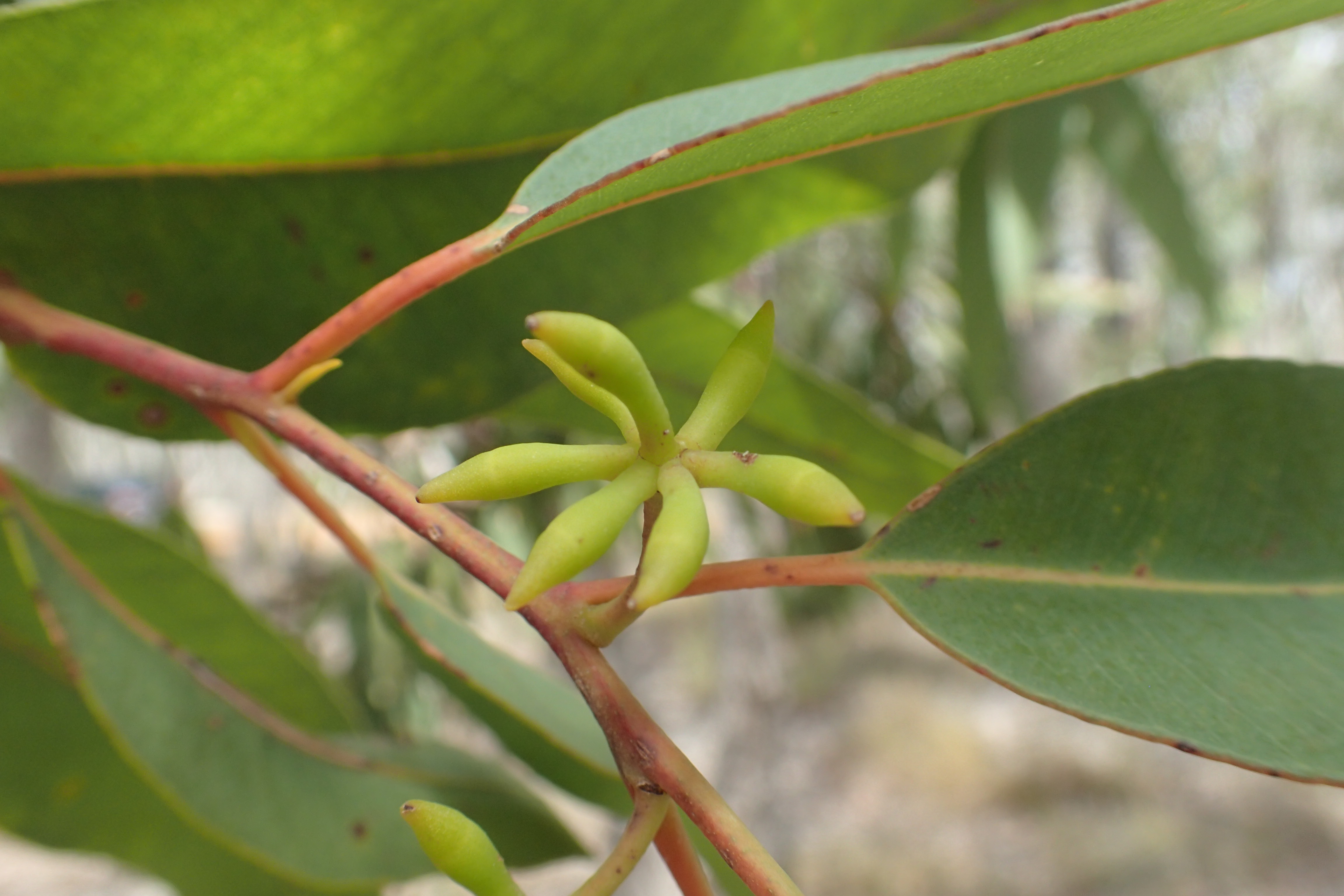|
Karakamia Sanctuary
Karakamia Sanctuary is a 2.75 km2 nature reserve in south-west Western Australia, 4 km from Chidlow and 50 km north-east of Perth. It is located within the jarrah forest of the Darling Scarp and is owned and managed by the Australian Wildlife Conservancy (AWC). History Karakamia was originally purchased by Martin Copley in 1991 and established as a sanctuary in 1992, effectively the founding property of the AWC. Since the initial purchase it has increased in size through the acquisition of adjacent private land. Although much of the property was never cleared, some areas had been cleared or selectively logged and a replanting program is being implemented. Landscape and climate Karakamia is on a lateritic plateau, with winter-flowing streams. The climate is Mediterranean with winter rainfall and dry summers. Average annual rainfall is 850 mm. Fauna Karakamia is managed to exclude exotic predators and herbivores, and a vermin-proof fence now surrounds ... [...More Info...] [...Related Items...] OR: [Wikipedia] [Google] [Baidu] |
Nature Reserve
A nature reserve (also known as a wildlife refuge, wildlife sanctuary, biosphere reserve or bioreserve, natural or nature preserve, or nature conservation area) is a protected area of importance for flora, fauna, or features of geological or other special interest, which is reserved and managed for purposes of conservation and to provide special opportunities for study or research. They may be designated by government institutions in some countries, or by private landowners, such as charities and research institutions. Nature reserves fall into different IUCN categories depending on the level of protection afforded by local laws. Normally it is more strictly protected than a nature park. Various jurisdictions may use other terminology, such as ecological protection area or private protected area in legislation and in official titles of the reserves. History Cultural practices that roughly equate to the establishment and maintenance of reserved areas for animals date bac ... [...More Info...] [...Related Items...] OR: [Wikipedia] [Google] [Baidu] |
Numbat
The numbat (''Myrmecobius fasciatus''), also known as the noombat or walpurti, is an insectivorous marsupial. It is diurnal and its diet consists almost exclusively of termites. The species was once widespread across southern Australia, but is now restricted to several small colonies in Western Australia. It is therefore considered an endangered species and protected by conservation programs. Numbats were recently re-introduced to fenced reserves in South Australia and New South Wales. The numbat is the faunal emblem of Western Australia. Taxonomy The numbat genus ''Myrmecobius'' is the sole member of the family Myrmecobiidae, one of four families that make up the order Dasyuromorphia, the Australian marsupial carnivores. The species is not closely related to other extant marsupials; the current arrangement in the order Dasyuromorphia places its monotypic family with the diverse and carnivorous species of Dasyuridae. Genetic studies have shown the ancestors of the numb ... [...More Info...] [...Related Items...] OR: [Wikipedia] [Google] [Baidu] |
Nature Reserves In Western Australia
Western Australia is the second largest country subdivision in the world. It contains no fewer than separate Protected Areas with a total area of (land area: – 6.30% of the state’s area). Ninety-eight of these are National Parks, totalling (2.14% of the state’s area). Protected areas of Western Australia Conservation Parks As of 2014, the following 58 conservation parks are listed as part of the National Reserve System with a total area of . *Blackbutt * Boyagarring * Brooking Gorge *Burra *Camp Creek *Cane River * Coalseam *Dardanup *Devonian Reef *Geikie Gorge *Goldfields Woodlands * Gooralong *Hester *Kerr *Korijekup * Lane Poole *Laterite *Len Howard *Leschenault Peninsula * Leschenaultia * Lupton *Monte Bello Islands *Mount Manning - Helena And Aurora Ranges *Muja * Penguin Island *Rapids * Rowles Lagoon * Shell Beach *Totadgin *Unnamed WA01333 *Unnamed WA17804 *Unnamed WA23088 *Unnamed WA23920 *Unnamed WA24657 *Unnamed WA28740 *Unnamed WA29901 *U ... [...More Info...] [...Related Items...] OR: [Wikipedia] [Google] [Baidu] |
Cyperaceae
The Cyperaceae are a family of graminoid (grass-like), monocotyledonous flowering plants known as sedges. The family is large, with some 5,500 known species described in about 90 genera, the largest being the "true sedges" genus ''Carex'' with over 2,000 species. These species are widely distributed, with the centers of diversity for the group occurring in tropical Asia and tropical South America. While sedges may be found growing in almost all environments, many are associated with wetlands, or with poor soils. Ecological communities dominated by sedges are known as sedgelands or sedge meadows. Some species superficially resemble the closely related rushes and the more distantly related grasses. Features distinguishing members of the sedge family from grasses or rushes are stems with triangular cross-sections (with occasional exceptions, a notable example being the tule which has a round cross-section) and leaves that are spirally arranged in three ranks. In comparison, ... [...More Info...] [...Related Items...] OR: [Wikipedia] [Google] [Baidu] |
Eucalyptus Rudis
''Eucalyptus rudis'', commonly known as flooded gum or moitch, is a species of small to medium-sized tree endemic to coastal areas near Perth, Western Australia. The Noongar names for the tree are colaille, gooloorto, koolert and moitch. This tree has rough, fibrous bark on the trunk and large branches, smooth greyish bark above, lance-shaped to curved adult leaves, flower buds in groups of between seven and eleven, white flowers and bell-shaped, cup-shaped or hemispherical fruit. Description ''Eucalyptus rudis'' is a tree that typically grows to a height of and forms a lignotuber. The trunk is usually short and has a poor form with a wide-spreading crown. It has rough, dark and light grey box-style bark on the trunk and larger branches, smooth greyish bark above. Young plants and coppice regrowth have stems that are square in cross-section and dull greyish green, egg-shaped to more or less round leaves that are long and wide. Adult leaves are arranged alternately, lance-shape ... [...More Info...] [...Related Items...] OR: [Wikipedia] [Google] [Baidu] |
Shrubland
Shrubland, scrubland, scrub, brush, or bush is a plant community characterized by vegetation dominated by shrubs, often also including grasses, herbs, and geophytes. Shrubland may either occur naturally or be the result of human activity. It may be the mature vegetation type in a particular region and remain stable over time, or a transitional community that occurs temporarily as the result of a disturbance, such as fire. A stable state may be maintained by regular natural disturbance such as fire or browsing. Shrubland may be unsuitable for human habitation because of the danger of fire. The term was coined in 1903. Shrubland species generally show a wide range of adaptations to fire, such as heavy seed production, lignotubers, and fire-induced germination. Botanical structural form In botany and ecology a shrub is defined as a much-branched woody plant less than 8 m high and usually with many stems. Tall shrubs are mostly 2–8 m high, small shrubs 1–2 m high and su ... [...More Info...] [...Related Items...] OR: [Wikipedia] [Google] [Baidu] |
Heathland
A heath () is a shrubland habitat found mainly on free-draining infertile, acidic soils and characterised by open, low-growing woody vegetation. Moorland is generally related to high-ground heaths with—especially in Great Britain—a cooler and damper climate. Heaths are widespread worldwide but are fast disappearing and considered a rare habitat in Europe. They form extensive and highly diverse communities across Australia in humid and sub-humid areas where fire regimes with recurring burning are required for the maintenance of the heathlands.Specht, R.L. 'Heathlands' in 'Australian Vegetation' R.H. Groves ed. Cambridge University Press 1988 Even more diverse though less widespread heath communities occur in Southern Africa. Extensive heath communities can also be found in the Texas chaparral, New Caledonia, central Chile, and along the shores of the Mediterranean Sea. In addition to these extensive heath areas, the vegetation type is also found in scattered locations acro ... [...More Info...] [...Related Items...] OR: [Wikipedia] [Google] [Baidu] |
Eucalyptus Patens
''Eucalyptus patens'', commonly known as yarri or blackbutt, is a species of flowering plant in the family Myrtaceae and is endemic to the south-west of Western Australia. It has rough bark on the trunk and branches, lance-shaped leaves, creamy-white flowers and spherical to oval fruit. Description ''Eucalyptus patens'' is a tree that may grow to a height of with a dbh of but is a smaller tree or mallee on less favourable sites. The thick, corky, friable bark has a rough texture and is deeply longitudinally furrowed. It is grey on the outside with a yellow tinge on the inside surface. The dull bluish green adult leaves are arranged alternately. The leaf blade is lance-shaped, sometimes curved, tapers to a fine point and is typically long and wide on a flat or channelled petiole long. The flower buds are arranged in leaf axils in groups of between seven and eleven on an unbranched peduncle long, the individual buds on pedicels long. Mature buds are club-shaped, with a h ... [...More Info...] [...Related Items...] OR: [Wikipedia] [Google] [Baidu] |
Eucalyptus Wandoo
''Eucalyptus wandoo'', commonly known as wandoo, dooto, warrnt or wornt, is a small to medium-sized tree that is endemic to the southwest of Western Australia. It has smooth bark, lance-shaped adult leaves, flower buds in groups of nine to seventeen, white flowers and conical to cylindrical fruit. It is one of a number of similar ''Eucalyptus'' species known as '' wandoo''. Description ''Eucalyptus wandoo'' is a tree that typically grows to a height of and sometimes to and has a diameter of and where the bole or trunk that is usually straight and composes 50% to 65% of the total height of the tree. ''E.wandoo'' can have long lifetimes with some trees is excess of 150 years of age. It forms a lignotuber, the woody tuber that begins to develop near the base of seedlings but can become huge in older trees and contains embedded epicormic buds that allow the plant to regenerate following destruction of the crown following fire or drought. Saplings and coppice regrowth have fib ... [...More Info...] [...Related Items...] OR: [Wikipedia] [Google] [Baidu] |
Corymbia Calophylla
''Corymbia calophylla'', commonly known as marri, is a species of flowering plant in the family Myrtaceae and is endemic to the southwest of Western Australia. It is a tree or mallee with rough bark on part or all of the trunk, lance-shaped adult leaves, branched clusters of cup-shaped or pear-shaped flower buds, each branch with three or seven buds, white to pink flowers, and relatively large oval to urn-shaped fruit, colloquially known as ''honky nuts''. Marri wood has had many uses, both for Aboriginal people, and in the construction industry. Description ''Corymbia calophylla'' is a large tree, or a mallee in poor soil, and that typically grows to a height of , but can reach over . The largest known individual ''C. calophylla'' is tall, has a girth and a wood volume of . The trunk of the tree may become up to wide, the branches becoming large, thick and rambling. It has rough, tessellated, grey-brown to red-brown bark that extends over the length of the trunk and branc ... [...More Info...] [...Related Items...] OR: [Wikipedia] [Google] [Baidu] |
Woodland
A woodland () is, in the broad sense, land covered with trees, or in a narrow sense, synonymous with wood (or in the U.S., the ''plurale tantum'' woods), a low-density forest forming open habitats with plenty of sunlight and limited shade (see differences between British, American, and Australian English explained below). Woodlands may support an understory of shrubs and herbaceous plants including grasses. Woodland may form a transition to shrubland under drier conditions or during early stages of primary or secondary succession. Higher-density areas of trees with a largely closed canopy that provides extensive and nearly continuous shade are often referred to as forests. Extensive efforts by conservationist groups have been made to preserve woodlands from urbanization and agriculture. For example, the woodlands of Northwest Indiana have been preserved as part of the Indiana Dunes. Definitions United Kingdom ''Woodland'' is used in British woodland management to mean tre ... [...More Info...] [...Related Items...] OR: [Wikipedia] [Google] [Baidu] |
Forest
A forest is an area of land dominated by trees. Hundreds of definitions of forest are used throughout the world, incorporating factors such as tree density, tree height, land use, legal standing, and ecological function. The United Nations' Food and Agriculture Organization (FAO) defines a forest as, "Land spanning more than 0.5 hectares with trees higher than 5 meters and a canopy cover of more than 10 percent, or trees able to reach these thresholds ''in situ''. It does not include land that is predominantly under agricultural or urban use." Using this definition, '' Global Forest Resources Assessment 2020'' (FRA 2020) found that forests covered , or approximately 31 percent of the world's land area in 2020. Forests are the predominant terrestrial ecosystem of Earth, and are found around the globe. More than half of the world's forests are found in only five countries (Brazil, Canada, China, Russia, and the United States). The largest share of forests (45 percent) are in th ... [...More Info...] [...Related Items...] OR: [Wikipedia] [Google] [Baidu] |





.jpeg/1200px-Amrum_(187753235).jpeg)

